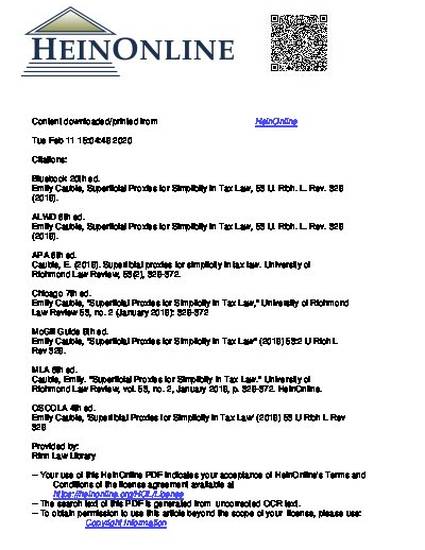
Article
Superficial Proxies For Simplicity In Tax Law
University of Richmond Law Review
(2019)
Abstract
Simplification of tax law is complicated. Yet, political rhetoric
surrounding tax simplification often focuses on simplistic, superficial
indicators of complexity in tax law such as word counts, page
counts, number of regulations, and similar quantitative metrics.
This preoccupation with the volume of enacted law often results in
law that is more complex in a real sense. Achieving real simplification-
a reduction in costs faced by taxpayers at various stages in
the tax planning, tax compliance, and tax enforcement process--often
requires enacting more law, not less. In addition, conceptualizing
simplicity in simplistic terms can leave the public vulnerable to
policies advanced under the guise of simplification that have real
aims that are less innocuous. A perennial example involves lawmakers
proposing a reduction in the number of tax brackets under
the heading of simplifying tax law. In reality, this change does very
little, if anything, to simplify law in a meaningful sense, and its
truer aim is to reduce progressivity in the tax code. Although the tax
legislation ultimately enacted in December 2017 did not change the
number of brackets applicable to individual taxpayers, political discourse
preceding its enactment once again touted a reduction in the
number of tax brackets as a simplifying measure.
Disciplines
Publication Date
January, 2019
Citation Information
Emily L Cauble. "Superficial Proxies For Simplicity In Tax Law" University of Richmond Law Review Vol. 53 Iss. 2 (2019) p. 329 - 371 ISSN: 1942-9835 Available at: http://works.bepress.com/emily-cauble/17/
